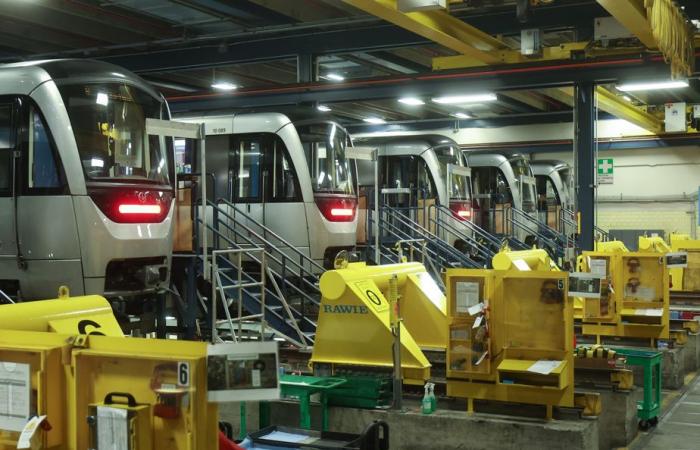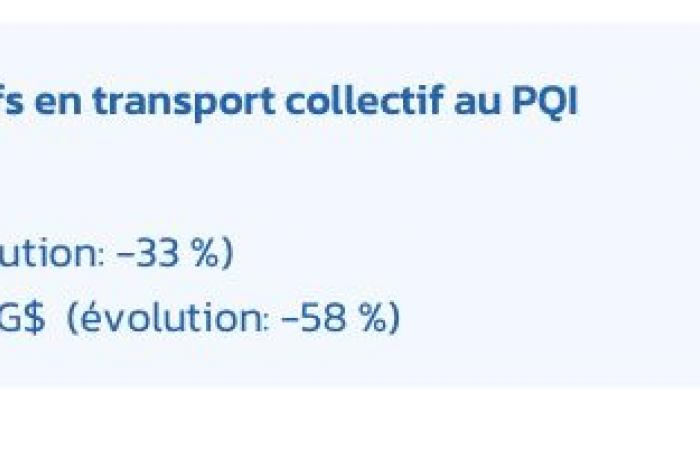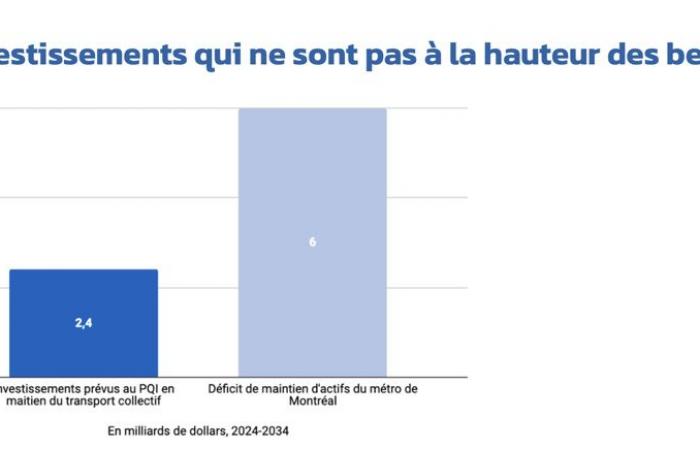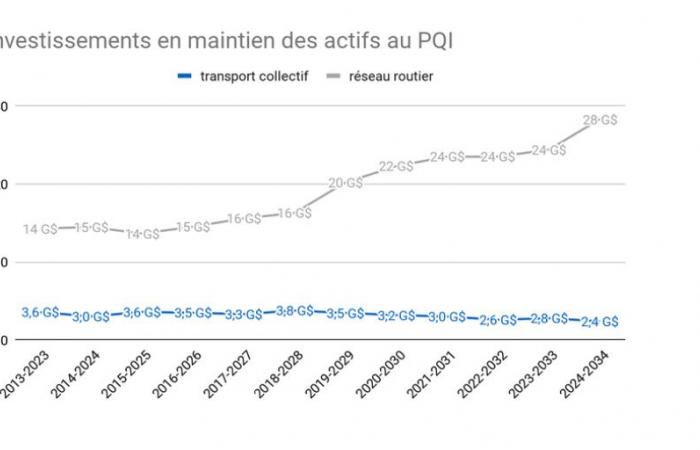(Quebec) Lights go out at Snowdon station, an emergency closure at Saint-Michel station: the largest public transport system in Canada, the Montreal metro, lacks love. In an analysis note, the Transit organization considers that this is a blind spot for the Quebec government, and highlights underfunding for the maintenance of public transportation compared to that of roads.
Posted at 5:00 a.m.
How much is the metro underfunded?
Transit, whose mission is to promote the development and improvement of public transport services, emphasizes that the metro has a maintenance deficit of six billion over ten years, according to the Société de transport de Montréal. This sum, notes the organization’s director of public affairs, Samuel Pagé-Plouffe, only concerns the maintenance of tunnels, stations and related infrastructure, such as ventilation stations for example. “That excludes rolling stock and maintenance workshops, so no development there, and no elevator,” he says. These amounts are only intended to “keep the lights on”.
TABLE PROVIDED BY TRANSIT
And how much are we investing at the moment?
For the period 2024-2034, the government of Quebec plans to invest 2.4 billion in maintaining assets in the Quebec Infrastructure Plan. This envelope is decreasing. This is a disappointment for Transit, which notes that 10 years earlier, for the period 2013-2023, the provincial government invested 5.8 billion (in adjusted dollars) for the maintenance of public transportation networks. These are amounts allocated for all transport companies. We do not know exactly the maintenance deficit of public transport in Quebec, since the Ministry of Transport does not collect this information, deplores Transit.
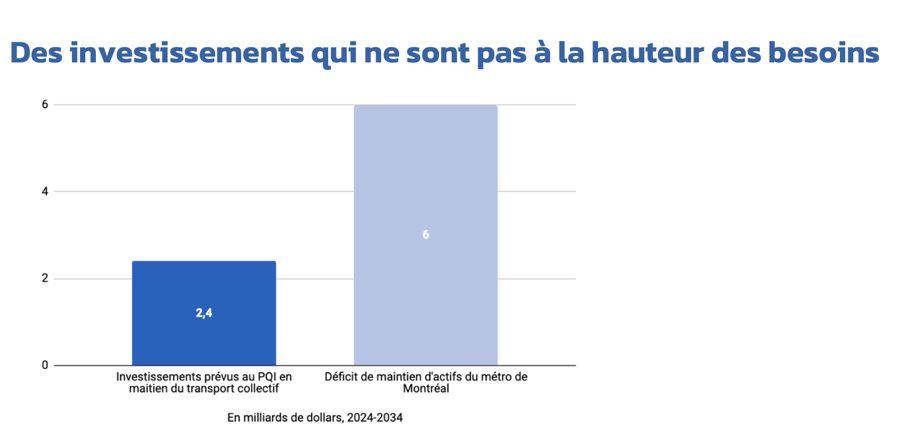
TABLE PROVIDED BY TRANSIT
Is Quebec doing the same thing with the roads?
No. In its analysis note, Transit highlights the amounts planned for roads and highways are increasing sharply. The gap between public transportation and roads is growing. For the 2013-2023 period, 20% of the maintenance envelope went to public transportation. For 2024-2034, it only represents 7.8%. Transit says it is not against road maintenance. But he criticizes the Legault government’s argument, which asserts that “the road network was built mainly during the 1960s and 1970s”, and that it “requires greater investments in maintaining the fleet than in public transport. » The Montreal metro was “largely built during the same period, and suffers from the same challenges of rapid deterioration,” maintains the organization.
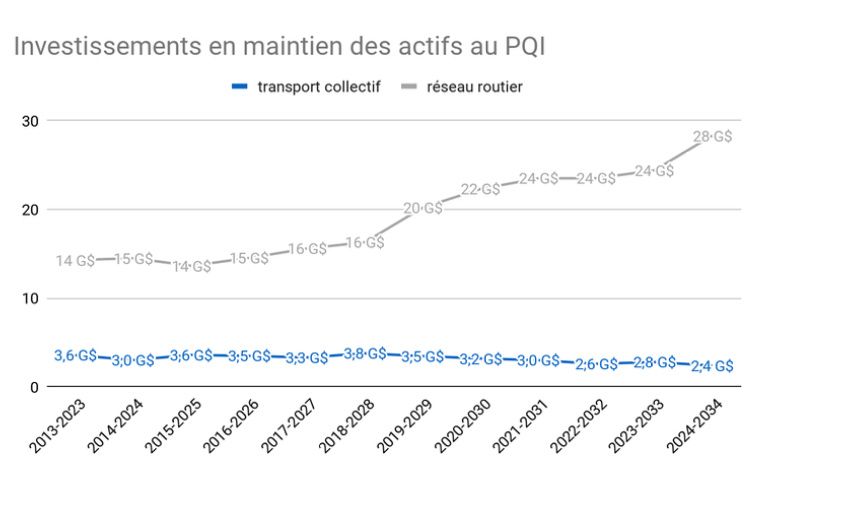
TABLE PROVIDED BY TRANSIT
What are the effects of this underfunding?
The most apparent effects are breakdowns and closures, such as the prolonged one of the Saint-Michel metro station. In May, La Presse reported that “unresolved” repair requests increased from 83 five years ago to 2,757 last year. But maintenance can also be a “vector of improving the offer”, says Transit. “Investments in maintaining assets also allow us to improve the service offering. For example, the modernization of the green line would allow an improvement in service of 37% – without building a new network or extension,” he says.
Why should we invest more?
Because, Transit says, it is “the most important transportation infrastructure in the country.” The Montreal metro has more than “800,000 daily passages” carries “twice the traffic of the bridges between the island and the South Shore combined together”, according to Florence Junca-Adenot, professor, department of urban and tourism studies at UQAM and spokesperson for Transit. Its proper functioning is “essential to the vitality of the metropolis and Quebec”. It is absolutely necessary to avoid other “interruptions of an essential service such as the emergency closure of the Saint-Michel station for an indefinite period”, indicates Samuel Pagé-Plouffe.

